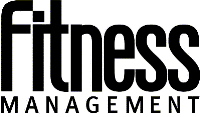
Pioneers and inventors have always amazed me. How did they come up with those ideas? What inspired them? Could I, in their situation, have done the same thing? Those of us in the fitness industry can certainly learn from our “founding fathers,” and gain inspiration from their hard work, creativity and commitment to the cause of “fitness” for the masses.
Ray Wilson is one of our pioneers, and he is still going strong. He recently started a new chain of clubs called Ray Wilson’s Healthy Exercise. And, true to form, this isn’t your typical health club chain. These facilities are geared toward “people of all ages who shy away from the traditional gym,” according to a recent news article. At 80 years old, Wilson is still looking ahead toward the future of our industry.
Wilson’s career can serve as an example to all fitness managers. Here is how he has continued to succeed for more than three decades and through varying financial climates:
1. Work hard: Wilson grew up in a large family of poor migrant farmers who all picked cotton to earn money. From that he gained a strong work ethic.
2. Go with your instincts: Wilson was one of the first to change the image of traditional gyms, transforming them into light, open areas that attracted more than just bodybuilders.
3. Listen to others: Wilson took advice from former astronaut James Lovell, who was also former chairman of the President’s Council on Physical Fitness, to include cardio training options in all of his future fitness centers.
4. Create smart partnerships: Wilson bought the rights to an exercise cycle in 1968, which he and business partner Augie Nieto perfected. This eventually became the Lifecycle, and the beginning of a fitness revolution.
5. Continue to reinvent your business: Wilson paid attention to trends and his market when opening new clubs. His original Family Fitness Centers became the model for modern chains, and all were eventually sold to 24 Hour Fitness. His new Healthy Exercise clubs may very well set new models for fitness centers geared toward the non-exerciser.



